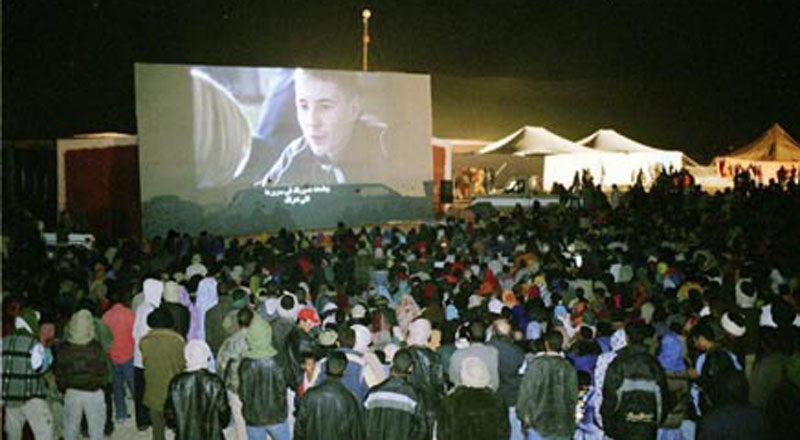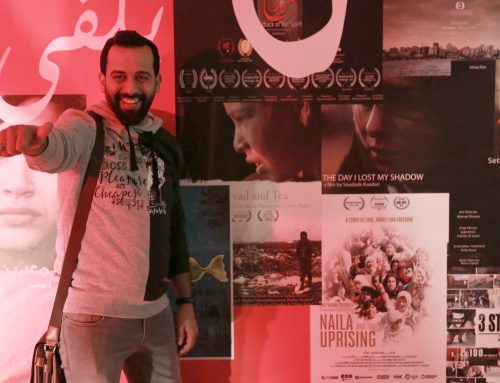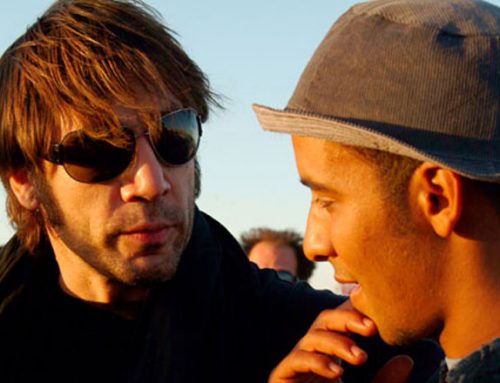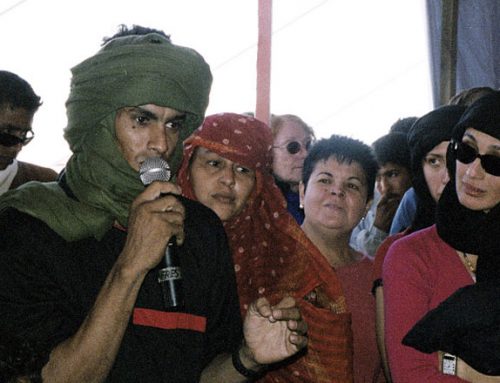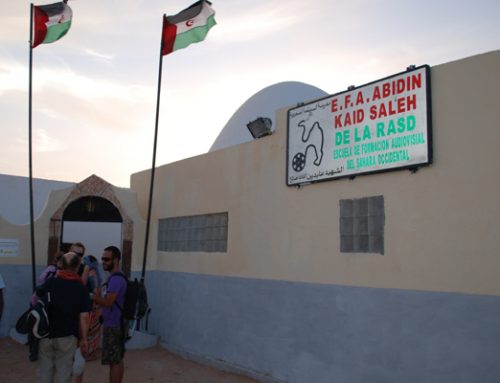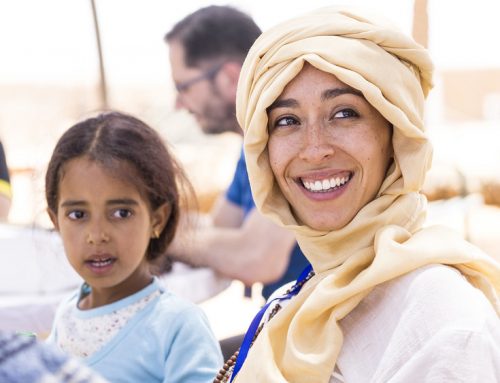“At Madrid airport, a mixture of 250 film-makers (mostly Spanish), actors, press and solidarity workers loaded up piles of supplies, including 21 full-length feature films that were to form the heart of the festival”. This is how the screenwriter Paul Laverty described in The Guardian in 2003 what he experienced in the first person in the expedition that would leave for the Smara refugee camp, in the Algerian desert of the Sahara. On November 20th, 2003, the first edition of the International Film Festival of the Sahara, FiSahara, started. (in the photo above, Sweet Sixteen projection on the Desert Screen – Joss)
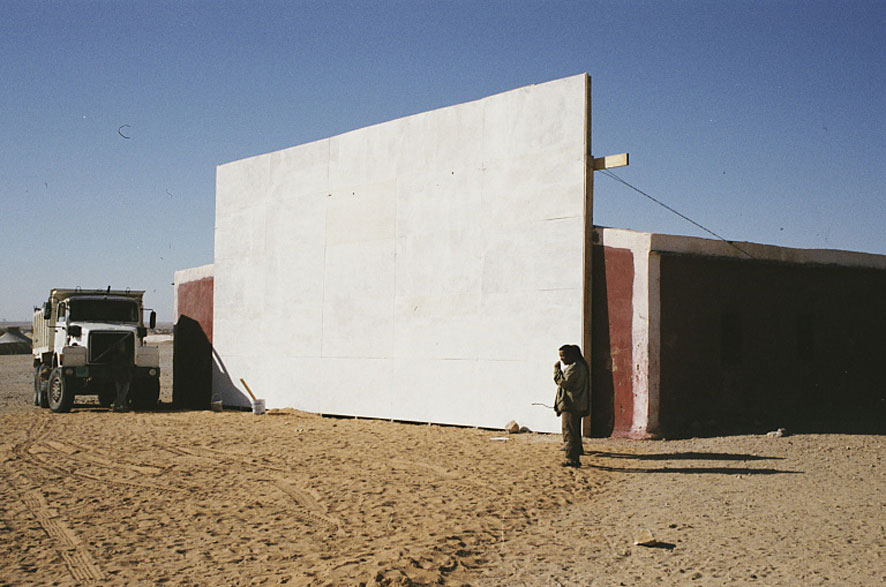
Finishing details on the Desert Screen (Iker Amas)
We started this retrospective of FiSahara leaning on the story by Laverty. “We arrived in pitch dark. There wasn’t a single light to be seen in a settlement with over 40,000 souls. By torch we were hustled through into an open-air adobe enclosure and the chaos began. You might think it would be a simple task to divide 250 into groups of five – and then for each group in turn to be assigned to a Saharawi family. No… but it didn’t matter. […] A young boy of nine held me firmly by the hand as he led us (one Scot, one Englishman, one Basque, two Peruvians) through the darkness, skilfully avoiding deep holes dug to extract sand for adobe bricks”.
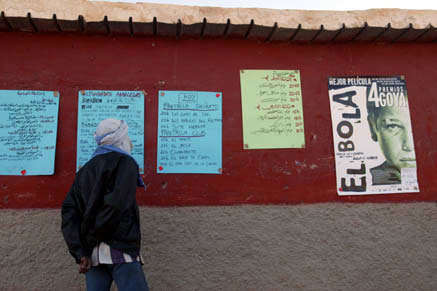
Billboard with the festival programming (Andrea Comas)
A madness had just begun that started when the president of CEAS-Sahara (State Coordinator of Solidarity Associations with the Sahara) José Taboada, known as Pepe, and the Polisario Front decided to invite the Peruvian director Javier Corcuera to spend the New Year’s Eve 2002 in one of the Sahrawi refugee camps. The original idea was to shoot a documentary about the situation to which the Saharawi people had been relegated by the entire International Community.
FiSahara_ElMundo2003Maurilio de Miguel, in his article for El Mundo, related how that documentary project became to FiSahara, thanks to “almost fifty Spanish cinema entities and town councils”. From the beginning, Spanish cinema world in particular and the culture world in general backed up the initiative. In that first edition, many of them traveled to the Sahara: the actors and actresses Jorge Perrugorría, Achero Mañas, Alberto San Juan, Candela Peña, Laia Marull (winner that year of the Silver Shell at the San Sebastián Film Festival for best actress for Te doy mis ojos) and María Esteve; the directors Javier Fesser, Julio Médem, Pere Joan Ventura, Pedro Pérez Rosado, Imanol Uribe, Fernando Pérez, María Miró, Ángel de la Cruz; the aforementioned screenwriter Paul Laverty; the writer Rosa Regás and the musician Fermín Muguruza.

Children queuing to go to the cinema for the first time in their lifes (Andrea Comas)
The media coverage achieved one of the festival’s objectives: to focus the information on the harsh reality that the Sahrawi people lived. However, it was not only about that, but also bringing culture to a forgotten community, bringing the magic of cinema to those who had never lived it and doing it under the stars. This was how Rafa Panadero related it from the Cadena SER (audio above), in whose chronicle he even related some small incident produced during the screening of Al otro lado de la cama… but that is another story that we will address in a future post.

